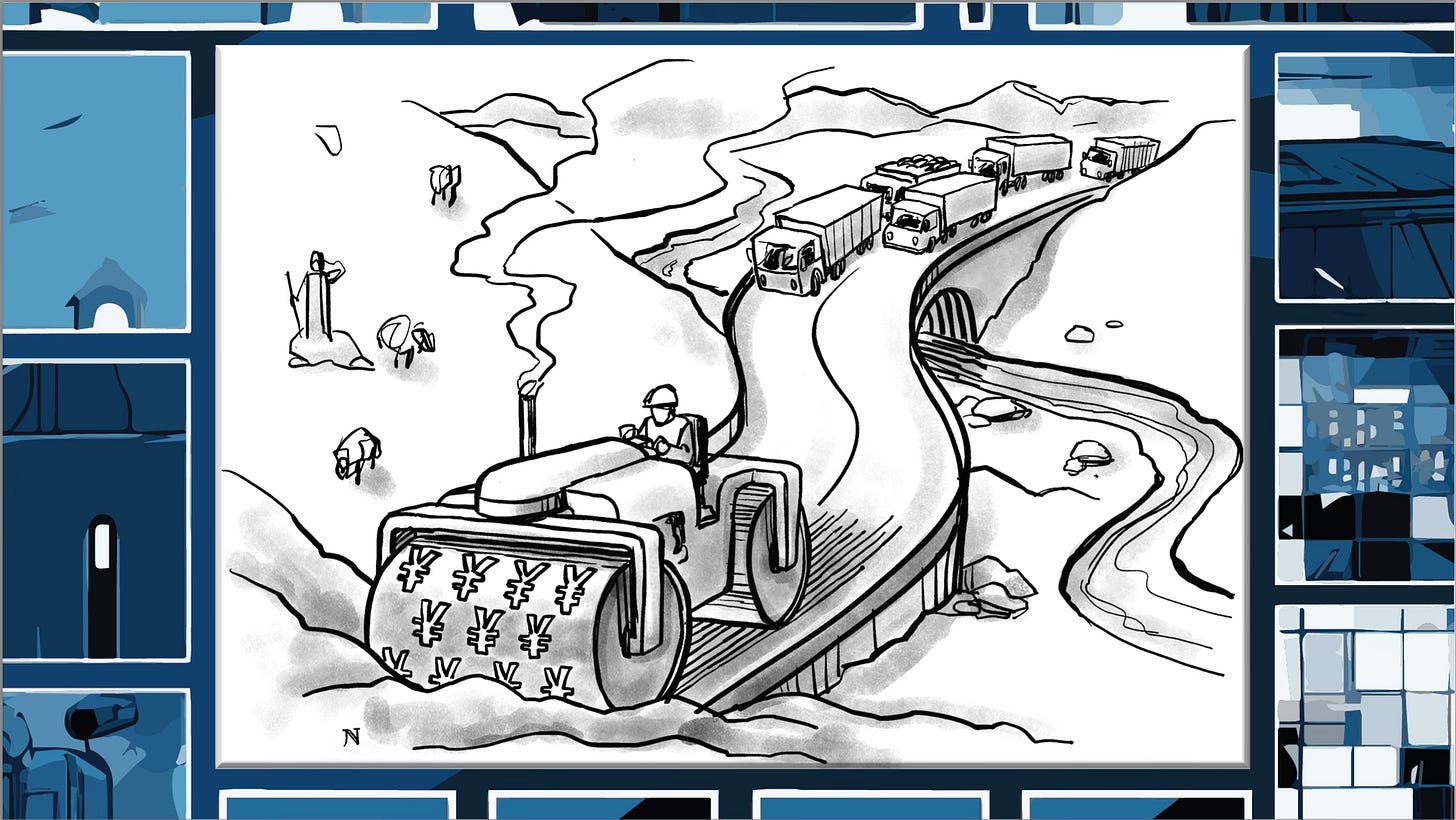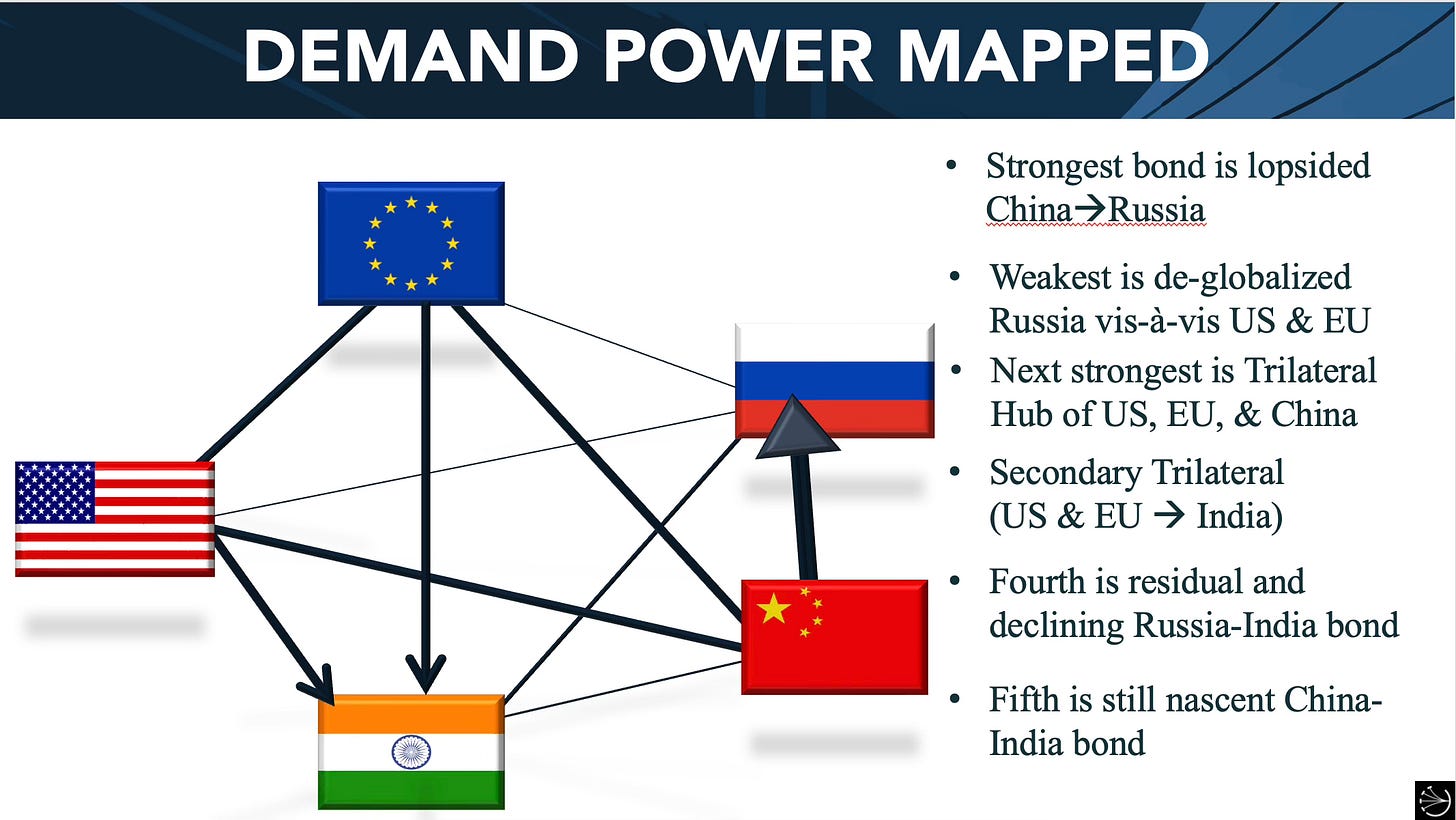Slide deck from the Times Group's India Leadership Council (ILC) presentation
Welcome new subscribers!
This morning, I remotely addressed several dozen Indian CEOs. My presentation went about 45 minutes, followed by a half hour of Q&A.
I did my usual America’s New Map pitch up front (with the US-centric stuff excised), followed by a strategic focus on India going forward, and then concluding with my best attempt at some business broad framing.
The questions were fairly focused around two issues:
The role that Indian business should play in conjunction with the government’s efforts to steer an aggressive growth trajectory.
How to deal with China? How much to hold off? How much to embrace?
I told them on #1 that, in my mind, because the Modi government was so openly focused on social welfare (refreshing for this American where the term is so vilified — as if empathy is weakness), India business should press the pedal to the metal, simply because so much momentum is required for a country that vast to “rise.” Plus, it’s not just the demographic dividend that’s motivating. There is also the climate change threat to India’s agriculture and the 45% of the nation’s labor force still involved in that sector. Thus, even if there was no demo dividend ongoing, India would be highly incentivized to depopulate its rural farming ranks through advanced technologies and mechanization so as to pre-empt big-time crop losses over time (which would drive people off the land all the same, just in a more negative way).
On #2, I said that India should welcome Chinese FDI in pretty much anything manufacturing-focused. The big no-no’s are the high-tech and telecom sectors.
Piggy-backing on the point about social welfarism: I gave my pitch about the “train’s engine can’t travel any faster than its caboose”: i.e., you can’t turn your urban coastal megacities totally loose on globalizing and leave your more traditional, interior, rural poor behind. When that core constituency gets mad, it tends to dig in its heels on traditions, religion, and — quite frankly — intolerance. This is the danger of Hindu nationalism: if New Delhi needs to tap that to rule the land and keep society coherent during this economic rise, it better do so as lightly as possible, because that monster tends to turn on political leadership through populist explosions (like Trumpism and White Christian Nationalism here). I feel like Indian elites, in general, are more sensitive to that than in the US, but it’s always easy to step over the line with conspicuous wealth.
I summed up my national/business advice with the following slide:
What I said was this:
Stay committed to fast and furious growth — whatever the near-term costs. Demographically speaking, that clock is ticking.
Be aggressive about addressing climate insecurities, particularly around agriculture. India’s rise is greatly complicated by climate change — GREATLY!
Avoid being suckered into any US containment strategy vis-a-vis China. It does not play into your long-term development interests.
Avoid a big conventional military build-up, seen by traditionalists as part and parcel of a superpower’s rise. The future is drone-on-drone warfare, with huge crossover potential into domestic security. The past? That all about obsessing over borders.
Compete vigorously with China in its worldwide schemes to gain network centrality in a many countries as possible. That naturally starts with NOT allowing that Chinese penetration to unfold inside India (a task pretty well done to-date).
Please keep in mind your historical role as a Global South model for how democracies can rise from humble economic beginnings. It matters more than you might imagine.
Pursue regional trade and investment integration across South Asia — whatever it takes in diplomacy. Otherwise, China wins by default via the Belt and Road Initiative. Hard to rise if you can’t integrate your own neighborhood.
Do NOT repeat China’s mistake of not encouraging an explosion in consumer demand. It is Xi Jinping’s great failing as a leader. He should not be emulated whatsoever. India’s sheer market size will be a huge source of power in the future.
Understand your role in the global narrative of globalization: India is today but Africa is tomorrow. India needs to rise so it can be the integrator of note on that continent for decades into the future.
Here is the slide deck in both PDF and file forms:


















































